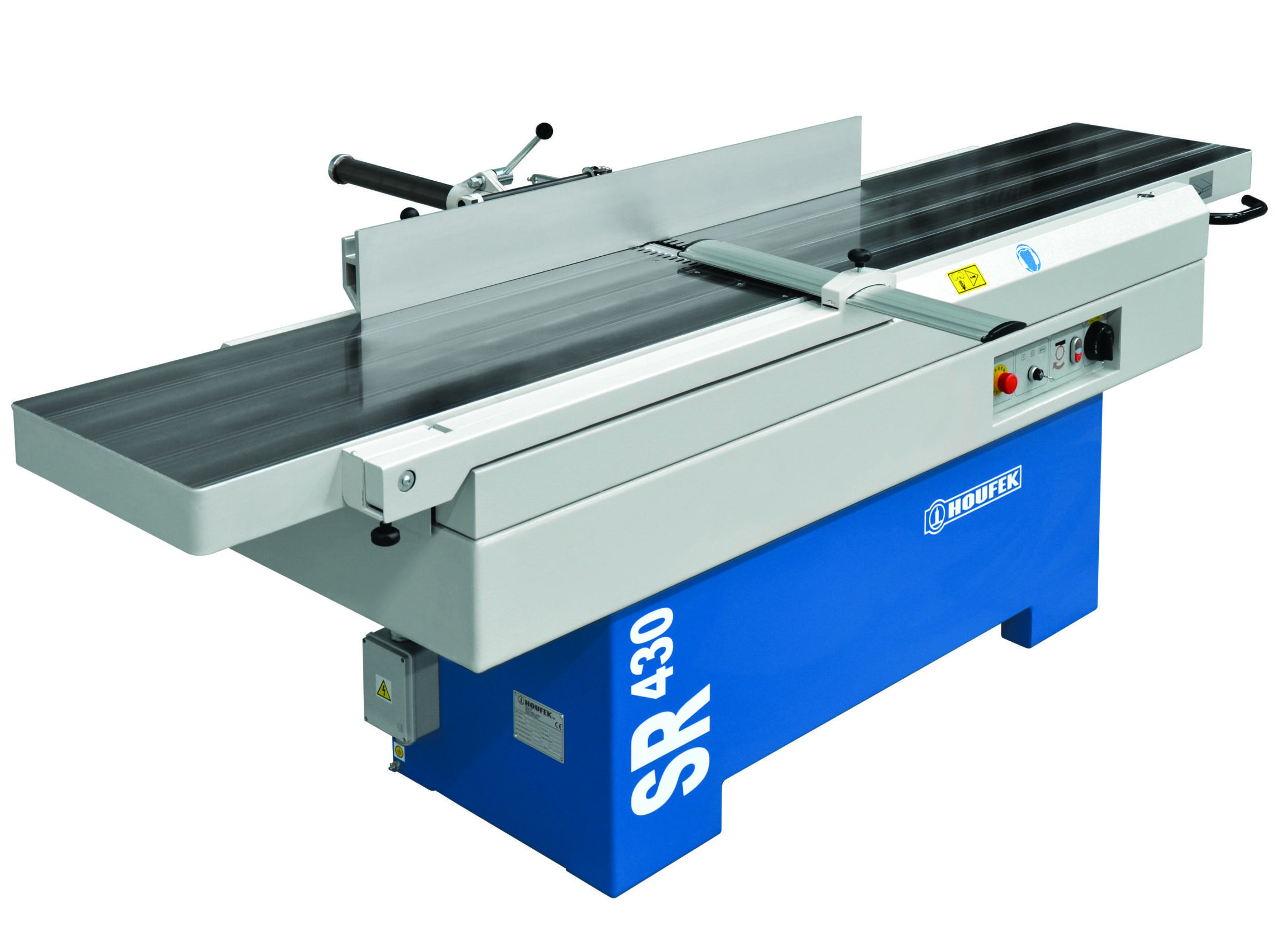Woodworking tools have evolved significantly, offering woodworkers more precision and efficiency in their craft. Among these tools, the surface planer stands out as an essential piece of equipment that every woodworker should have in their arsenal. Understanding surface planer uses can transform your woodworking projects, ensuring smoother, more professional finishes. In this comprehensive guide, we delve into the world of surface planers, exploring their functions, applications, and benefits.
Whether you're a beginner or an experienced woodworker, understanding the uses of a surface planer can elevate your projects to new heights. This guide will provide you with all the information you need to harness the full potential of your surface planer, ensuring your projects are completed with precision and finesse.
From the basics of surface planer operation to advanced techniques, this article covers everything you need to know about surface planer uses. By the end of this guide, you'll have a solid understanding of how this tool can enhance your woodworking skills and improve the quality of your projects.
Read also:Understanding Alexa Datt Measurements A Comprehensive Guide
Table of Contents
- Introduction to Surface Planers
- History and Evolution of Surface Planers
- Types of Surface Planers
- Primary Surface Planer Uses
- Benefits of Using a Surface Planer
- Safety Tips When Using a Surface Planer
- Maintaining Your Surface Planer
- Tips for Effective Surface Planer Use
- Comparison with Other Woodworking Tools
- Common Questions About Surface Planers
Introduction to Surface Planers
A surface planer is a versatile woodworking tool designed to smooth and flatten wooden surfaces. It is an essential tool for any woodworker looking to achieve professional-grade finishes on their projects. The primary function of a surface planer is to remove unevenness and imperfections from the surface of wood, ensuring a smooth and uniform finish.
How Surface Planers Work
Surface planers operate by passing wood over a set of rotating blades that shave off thin layers of material. This process continues until the desired thickness and smoothness are achieved. Modern surface planers come equipped with advanced features, such as adjustable depth settings and dust collection systems, making them more efficient and user-friendly.
History and Evolution of Surface Planers
The concept of planing wood dates back centuries, with early woodworkers using hand planes to achieve smooth surfaces. Over time, advancements in technology led to the development of powered planers, significantly increasing productivity and precision. Today, surface planers are available in various sizes and configurations, catering to both hobbyists and professional woodworkers.
Key Milestones in Surface Planer Development
- Introduction of electric-powered planers in the early 20th century.
- Development of portable planers for on-site use.
- Incorporation of digital controls for enhanced accuracy.
Types of Surface Planers
Surface planers come in different types, each suited for specific applications. Understanding the differences between these types can help you choose the right planer for your needs.
1. Benchtop Planers
Compact and affordable, benchtop planers are ideal for small workshops and hobbyists. They offer sufficient power and precision for most woodworking tasks without taking up too much space.
2. Standalone Planers
These larger planers are designed for heavy-duty use in professional settings. They provide greater capacity and more advanced features, making them suitable for large-scale projects.
Read also:Who Is Free Father Teresa Discovering The Legacy Of A Modernday Humanitarian
Primary Surface Planer Uses
The versatility of surface planers makes them indispensable in various woodworking applications. Here are some of the primary uses of a surface planer:
1. Smoothing Wood Surfaces
One of the most common surface planer uses is smoothing rough wood surfaces. This ensures a uniform finish, free from imperfections and splinters.
2. Achieving Consistent Thickness
Surface planers are excellent for ensuring consistent thickness across pieces of wood, which is crucial for creating tight-fitting joints and assemblies.
3. Removing Warps and Twists
By carefully planing warped or twisted wood, you can restore its flatness, making it suitable for further processing or assembly.
Benefits of Using a Surface Planer
Incorporating a surface planer into your woodworking toolkit offers numerous benefits:
1. Improved Precision
Surface planers allow for precise control over the thickness and smoothness of wood, leading to higher-quality finished products.
2. Increased Efficiency
With a surface planer, you can process wood much faster than with traditional hand tools, saving time and effort on large projects.
3. Enhanced Safety
Modern surface planers come equipped with safety features, such as blade guards and emergency stop buttons, reducing the risk of accidents.
Safety Tips When Using a Surface Planer
While surface planers are powerful tools, they must be used with caution to avoid accidents. Here are some essential safety tips:
- Always wear appropriate personal protective equipment (PPE), including safety glasses and hearing protection.
- Ensure that the planer is properly grounded before use.
- Keep your hands away from the blades at all times.
Maintaining Your Surface Planer
Regular maintenance is crucial for ensuring the longevity and optimal performance of your surface planer. Here's how you can keep your planer in top condition:
1. Clean After Each Use
Remove sawdust and debris from the planer after each use to prevent buildup and maintain accuracy.
2. Sharpen Blades Regularly
Dull blades can affect the quality of your work and increase the risk of accidents. Sharpen or replace blades as needed.
Tips for Effective Surface Planer Use
To get the most out of your surface planer, consider the following tips:
- Start with a shallow cut depth to avoid overworking the tool.
- Feed wood into the planer at a consistent speed for even results.
- Use a push stick or push block to maintain control and improve safety.
Comparison with Other Woodworking Tools
While surface planers are highly effective for smoothing and flattening wood, they are not the only tool available for these tasks. Here's how surface planers compare to other woodworking tools:
1. Jointers
Jointers are similar to surface planers but focus on straightening edges rather than flattening surfaces. Using both tools together can yield superior results.
2. Hand Planes
Hand planes offer more control and are ideal for small, detailed work, but they lack the speed and efficiency of surface planers.
Common Questions About Surface Planers
1. What is the difference between a thickness planer and a surface planer?
A thickness planer focuses on achieving consistent thickness, while a surface planer emphasizes smoothing and flattening the surface of the wood.
2. Can a surface planer replace a jointer?
While a surface planer can perform some functions of a jointer, they are not interchangeable. A jointer is specifically designed for edge straightening, which a surface planer cannot achieve as effectively.
3. How often should I sharpen the blades on my surface planer?
The frequency of blade sharpening depends on usage, but as a general rule, inspect the blades after every 50-100 hours of operation and sharpen or replace them as needed.
Conclusion
Surface planers are indispensable tools for any woodworker, offering precision, efficiency, and safety in smoothing and flattening wood surfaces. By understanding the various surface planer uses and following best practices for operation and maintenance, you can enhance the quality of your woodworking projects and achieve professional-grade finishes.
We encourage you to share your thoughts and experiences with surface planers in the comments section below. Additionally, feel free to explore other articles on our site for more woodworking tips and tricks. Happy crafting!

